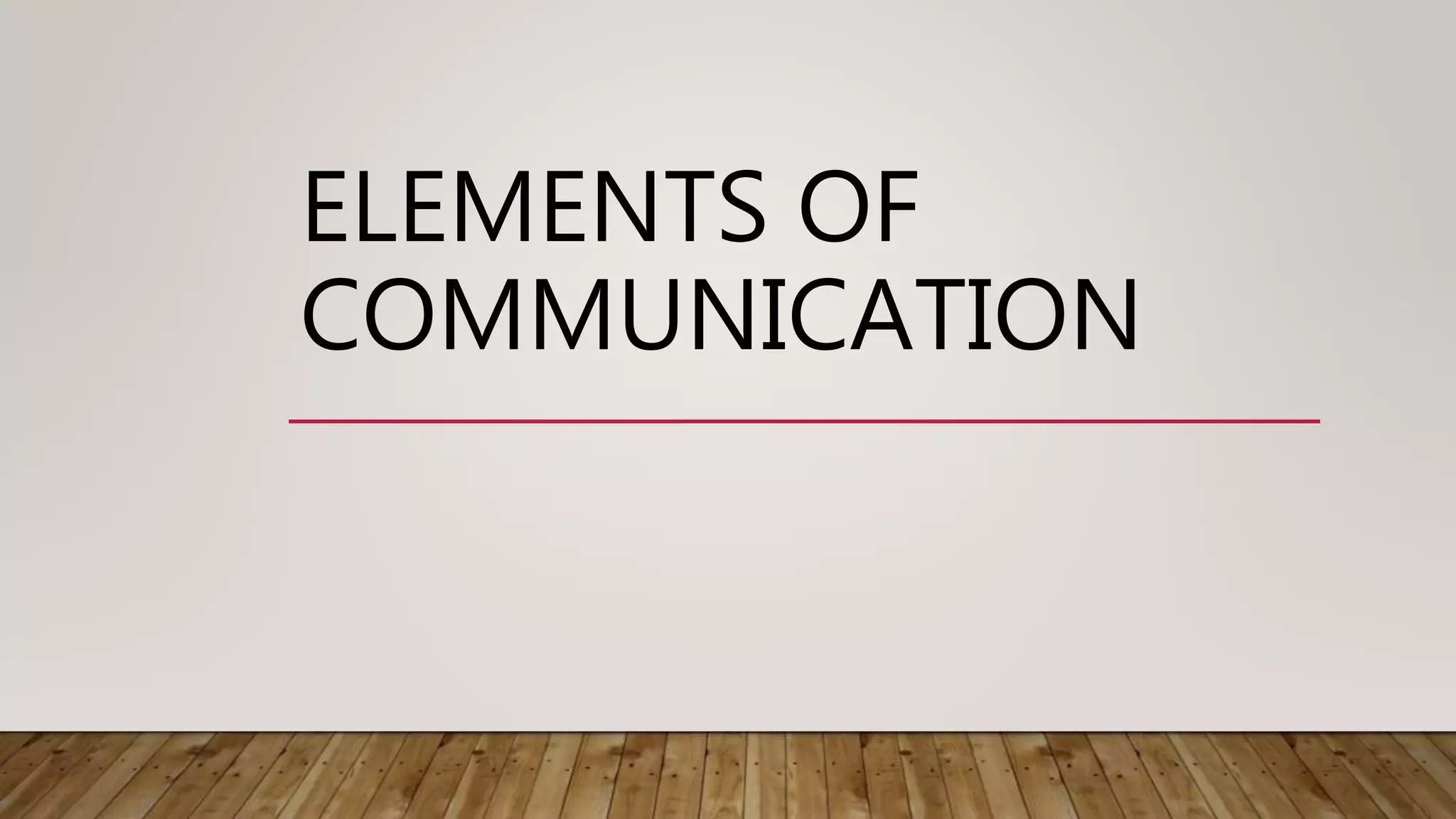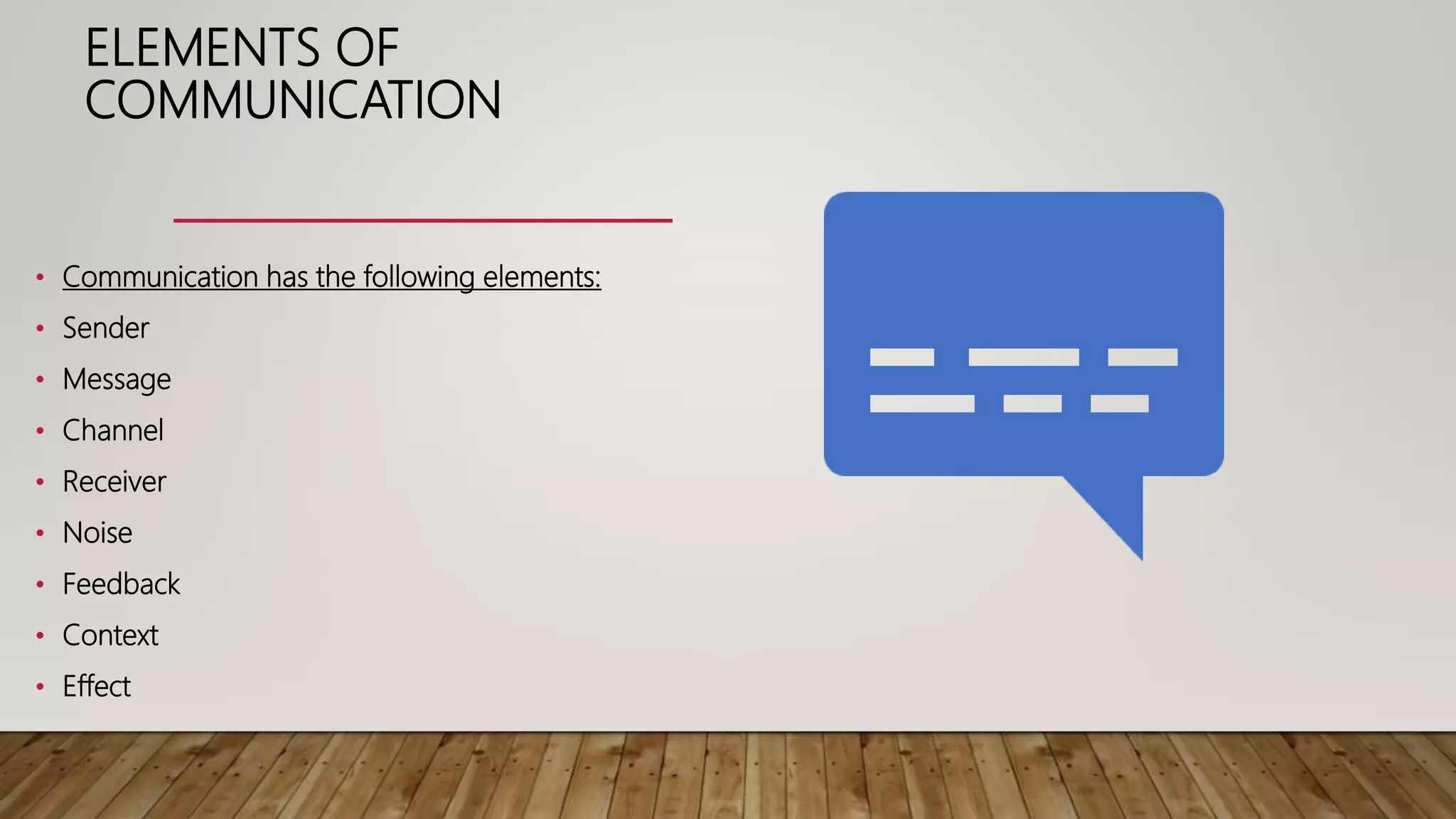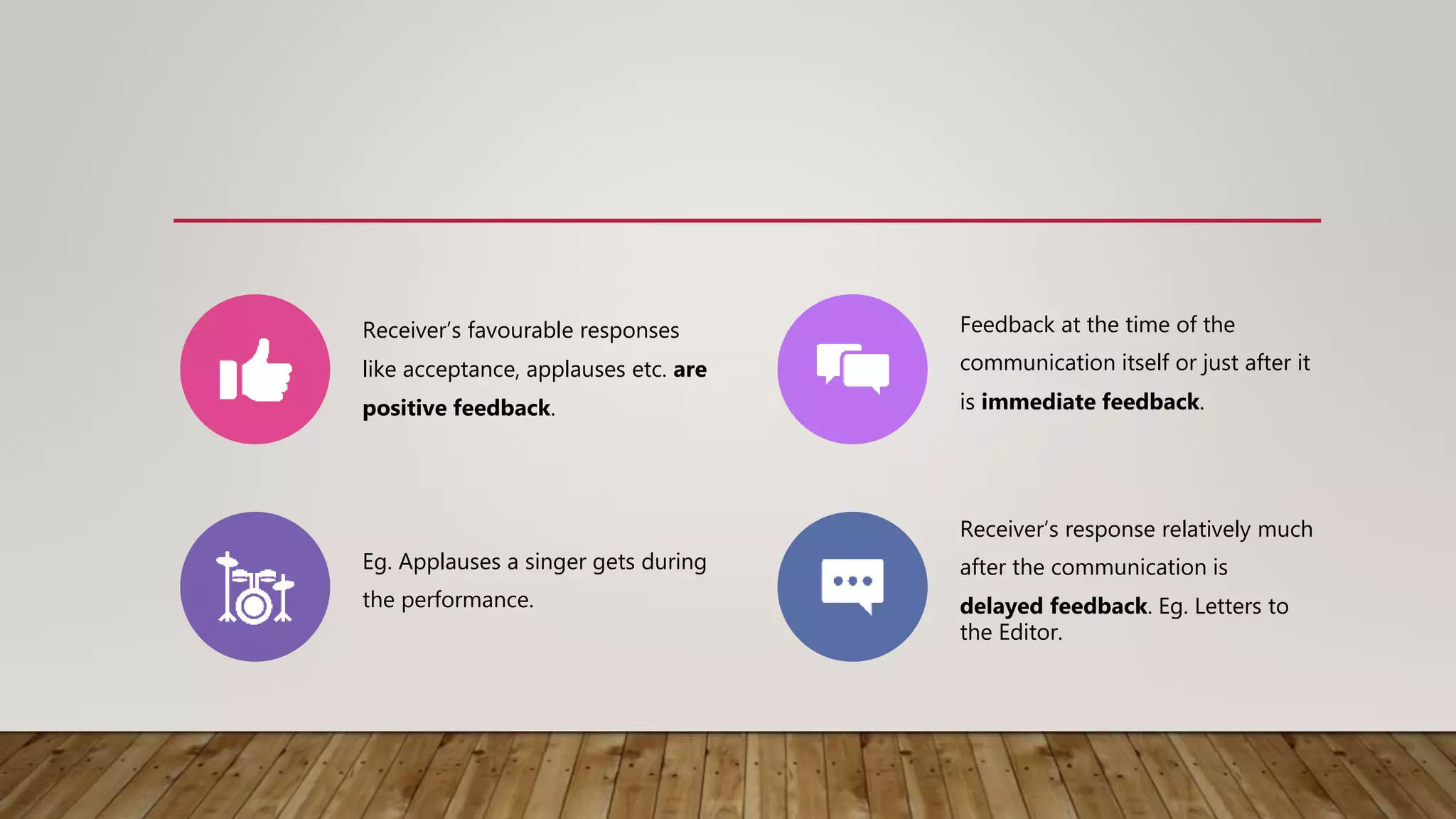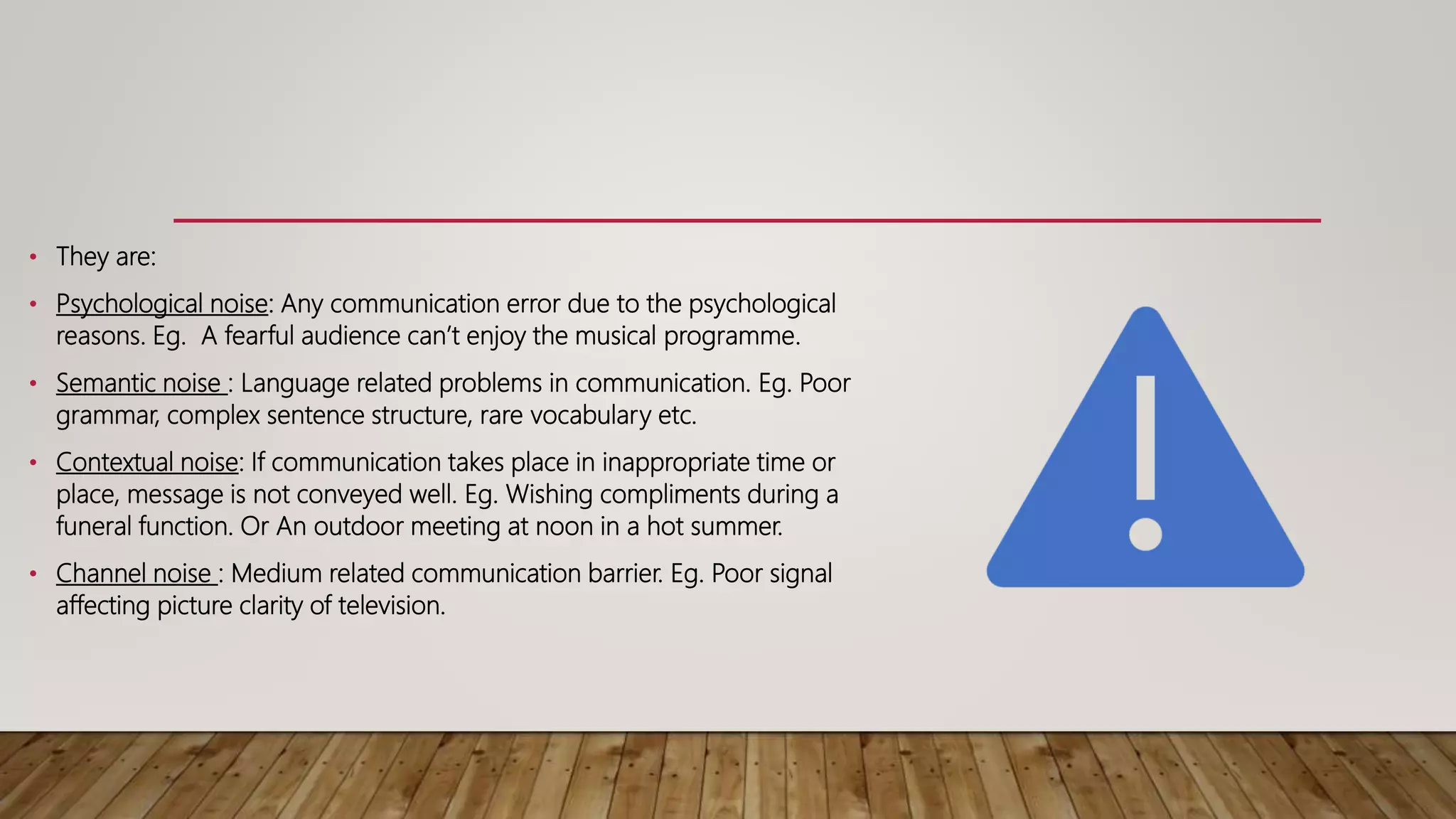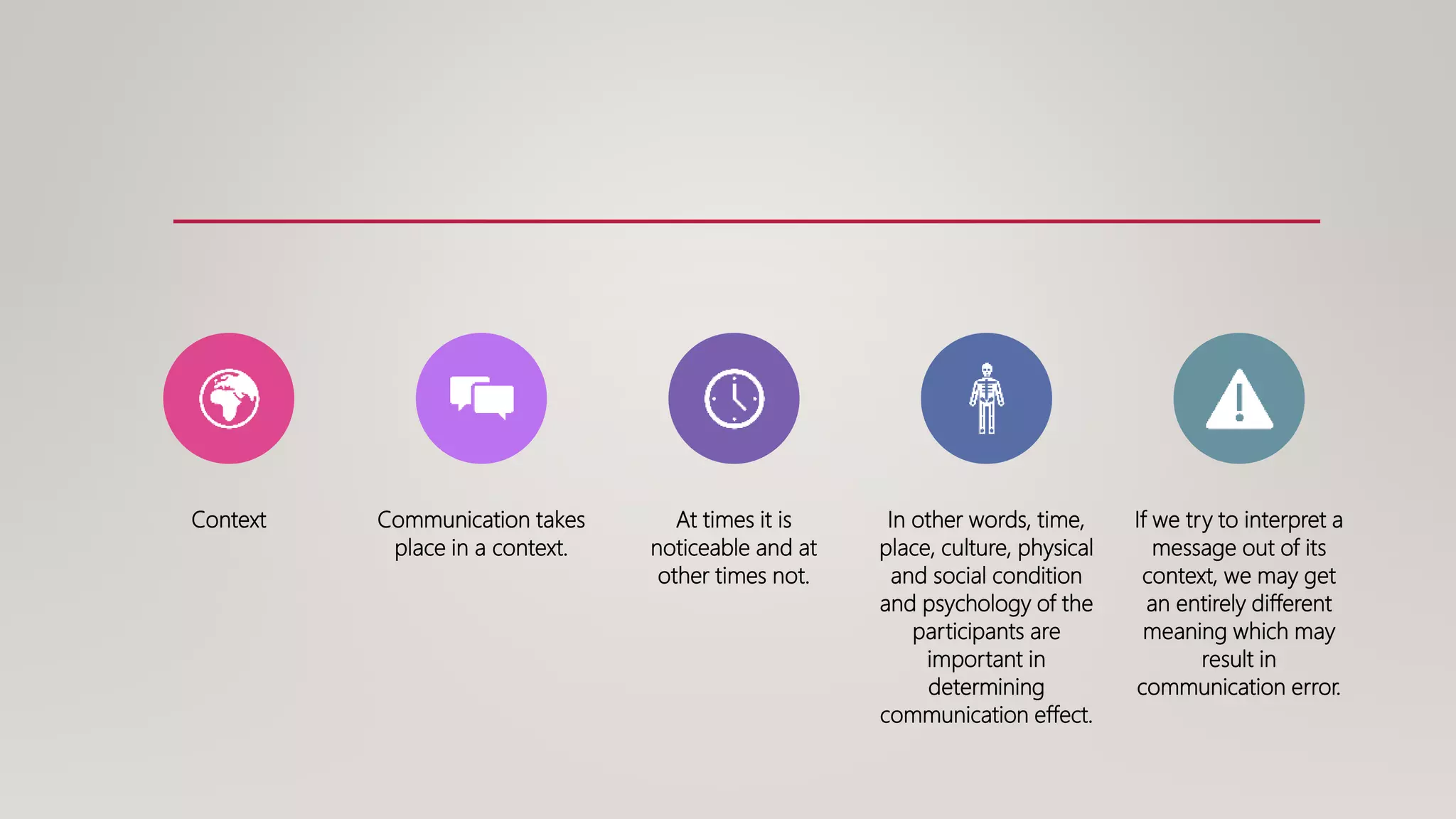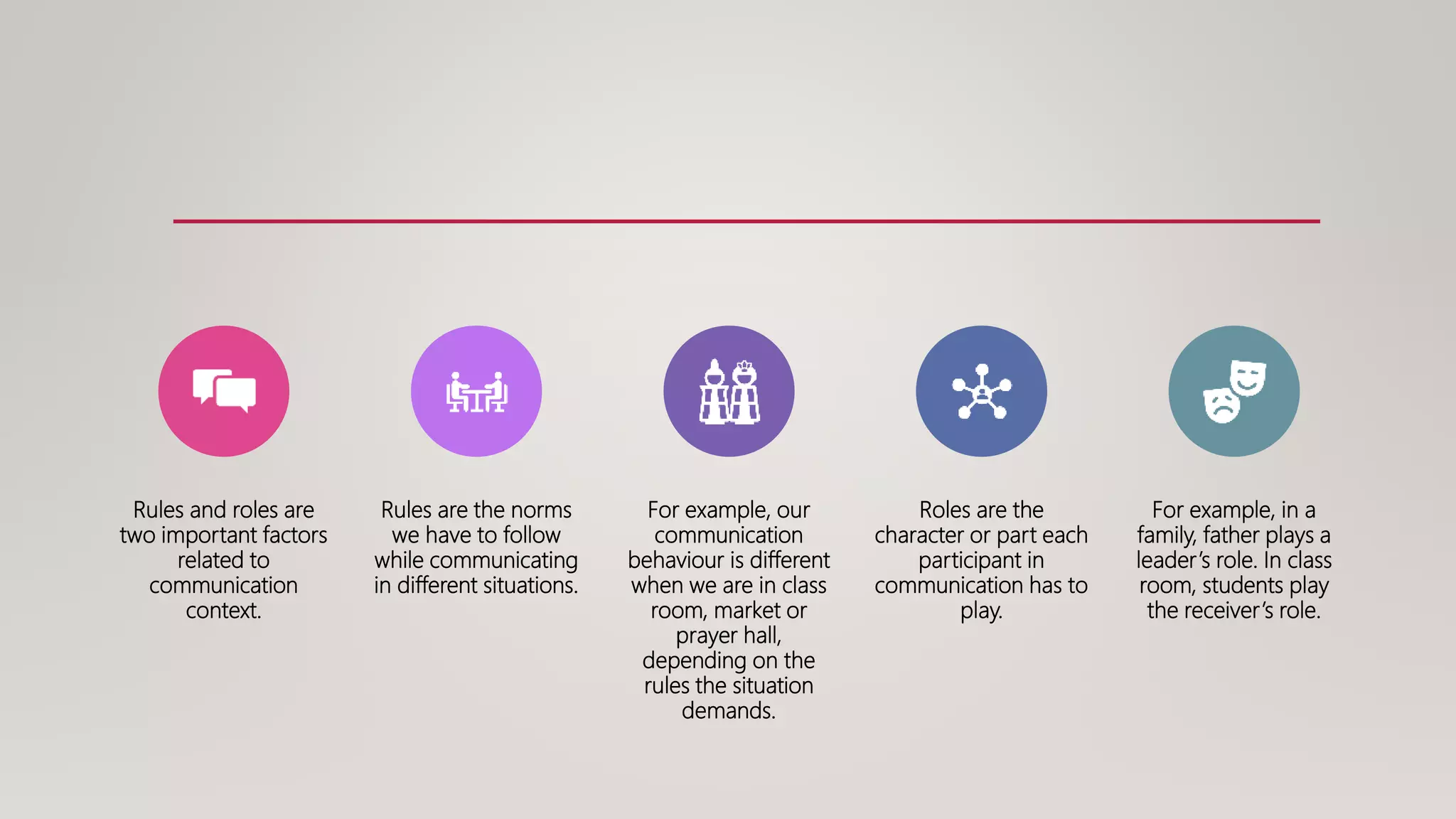The key elements of communication are the sender, message, channel, receiver, noise, feedback, context, and effect. The sender is the originator of the message and encodes their idea. The message is conveyed through a channel to the receiver who decodes it. Noise can distort the message. Feedback informs the sender if the message was received as intended. Context refers to the environment and circumstances. The ultimate goal is to achieve the intended effect on the receiver through any cognitive, affective, or behavioral changes.
